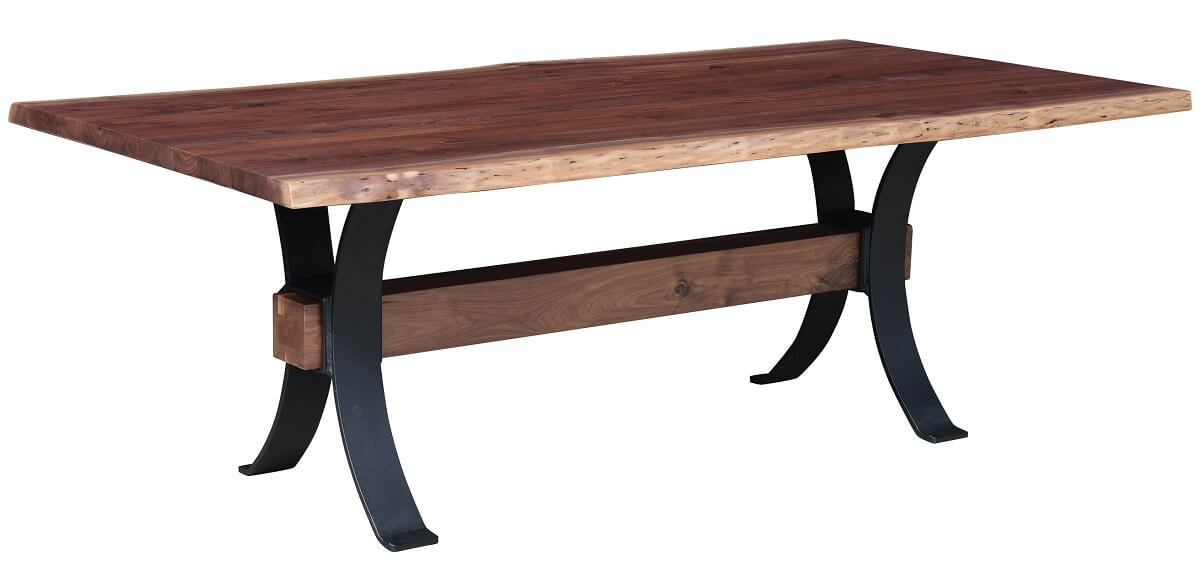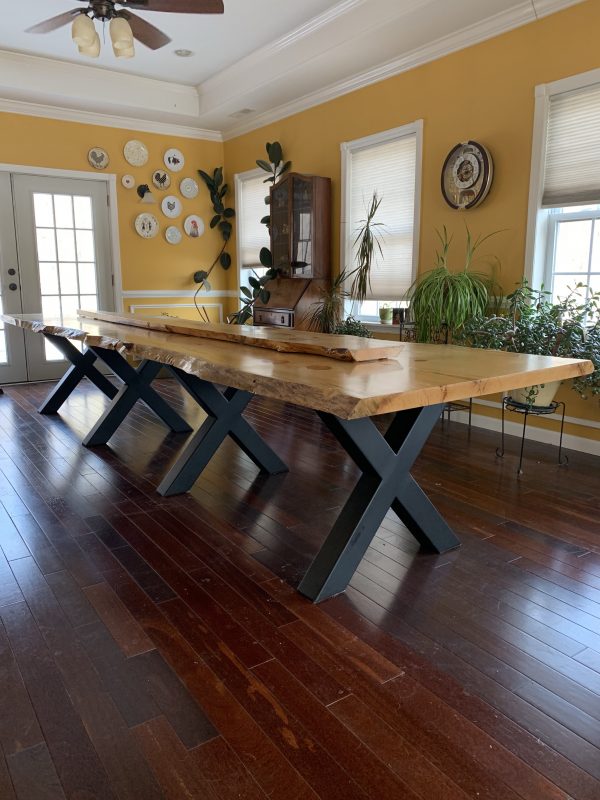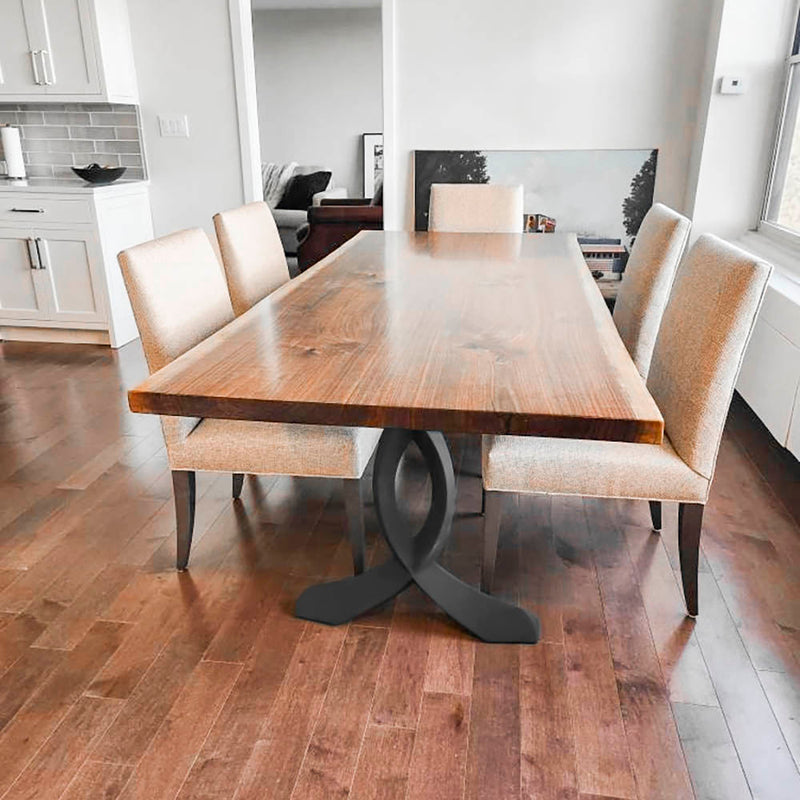How to Maintain and Care for Your Dining Room Table Legs
How to Maintain and Care for Your Dining Room Table Legs
Blog Article
Just How to Choose the Perfect Dining Room Table Legs for Your Home Décor
Picking the perfect dining-room table legs is a nuanced process that needs careful consideration of different aspects, including your room restraints, visual preferences, and sensible requirements. The interaction in between designs, products, and dimensions can substantially affect the ambiance of your eating location, making it important to approach this choice methodically. As you contemplate the myriad options offered, it comes to be clear that the appropriate choice extends past plain look; it can boost your overall eating experience. What elements should you focus on to ensure your option matches your home's one-of-a-kind character?
Assess Your Dining Area
Analyzing your dining space is crucial for selecting the right table legs that enhance both looks and functionality. Begin by gauging the dimensions of your dining area, including ceiling height, flooring room, and closeness to various other furnishings. This details will help determine the appropriate size and elevation of your table, which straight influences the option of table legs.
Next, think about the design and layout of your dining room. An open-concept design may profit from table legs that offer aesthetic agility, such as slim steel or acrylic options. Alternatively, an extra conventional setup might call for durable wooden legs that provide a feeling of durability.
Review the existing shade palette and materials in your eating location. Harmonizing the table legs with these components creates a natural look that enhances the overall decoration. Furthermore, assume about the performance required in your room. If you regularly host big gatherings, consider legs that give added support and stability.
Eventually, a detailed evaluation of your eating area will assist you in making an educated decision, guaranteeing that your table legs not only enhance the aesthetic appeal however additionally serve useful objectives.
Consider Your Design Preferences
When choosing eating room table legs, it is vital to review your individual design preferences, as they significantly influence the total aesthetic of your dining area. Your option of table legs can either complement or comparison with existing decor, making it essential to straighten them with your preferred indoor design motif.
If your home leans in the direction of a contemporary visual, think about sleek steel or minimalist wood legs that supply a clean, minimalist look. For a much more standard approach, elaborate wood legs with intricate carvings can add a touch of sophistication and refinement. Industrial styles take advantage of robust, resources such as reclaimed timber and metal mixes, reflecting a tough appeal.
Furthermore, farmhouse and rustic styles frequently favor durable, chunky legs that evoke a sense of warmth and comfort. Conversely, if your decoration is eclectic, you may choose unusual forms or a mix of materials to develop visual passion.

Evaluate Material Options
The choice of product for eating space table legs plays a critical function in both longevity and visual allure. Usual products include timber, steel, and composite options, each offering unique attributes that can influence the overall appearance and long life of your table.
Wood is a classic option, recognized for its heat and convenience. Woods like oak and walnut give remarkable stamina and can be completed in different discolorations to match any type of decoration. Nevertheless, softwoods like want are much more vulnerable to damages and scratches, making them less perfect for high-traffic areas.
Metal legs, often crafted from steel or aluminum, exhibit modernity and commercial appeal. They are immune and extremely resilient to use, making them suitable for family members with kids or frequent gatherings (dining room table legs). In addition, metal can be finished in numerous colors, improving the modification possibilities
Composite materials, such as MDF or laminate, deal cost and diverse designs. While generally less resilient than solid timber or metal, they can still provide an elegant appearance and are often easy to keep.
Eventually, the product you choose must align with your lifestyle, aesthetic preferences, and the degree of use your table will certainly experience.
Determine Height and Size
Choosing the proper height and size for your eating room table is crucial for both performance and convenience. The conventional height for dining tables commonly ranges from 28 to 30 inches, enabling adequate legroom for most individuals when seated. Nonetheless, it is crucial to think about the dimensions of your dining area and the kinds of chairs you prepare to make use of.

Moreover, think about the percentages of your eating area. A bigger table in a spacious area can develop a grand ambiance, while a smaller table functions well in even more intimate setups. Inevitably, the ideal height and dimension will harmonize with your general style and enhance the dining experience for you and your guests.
Explore Modification Opportunities

Additionally, the style of the legs can be customized to fit different designs, such as rustic, modern-day, or commercial. As an example, tapered legs can evoke a mid-century modern-day feeling, while chunky, block-style legs might reverberate with traditional or farmhouse decoration.
Home owners can also check out shade coatings, from natural timber spots helpful resources to paint, enabling them to match or contrast with the tabletop and surrounding design.
Furthermore, leg height can be changed to suit particular seating arrangements or personal preferences, boosting both comfort and performance.
Last but not least, distinct embellishments, such as makings or attractive braces, can better individualize the table legs, making the eating experience not simply a dish however a declaration item in the home. By taking into consideration these customization options, homeowners can produce a dining-room table that really reflects their originality.
Conclusion
Choosing the optimal dining-room table legs requires mindful factor to consider of numerous elements, consisting of the measurements of the dining room, design choices, material toughness, and wanted height. Modification choices better enhance the capability to accomplish a cohesive visual that matches the overall style. By methodically assessing these components, property owners can make sure that the chosen table legs not just satisfy practical demands however also add favorably to the dining experience and ambiance of the home.
Picking the optimal eating room table legs is a nuanced procedure that calls for cautious consideration of various components, including your space restraints, visual choices, and functional demands.Assessing your eating area is critical for picking the right table legs that enhance both aesthetic appeals and functionality.When determining dimension, determine the location Homepage where the table will be positioned to guarantee it fits pleasantly, enabling for at the very least 36 inches of clearance around the table for simple movement. A larger table in a spacious area can develop a grand setting, while a smaller table functions well in even more intimate setups.Choosing the suitable eating space table legs requires careful factor to consider of different elements, consisting of the measurements of the dining area, style preferences, material longevity, and desired elevation.
Report this page